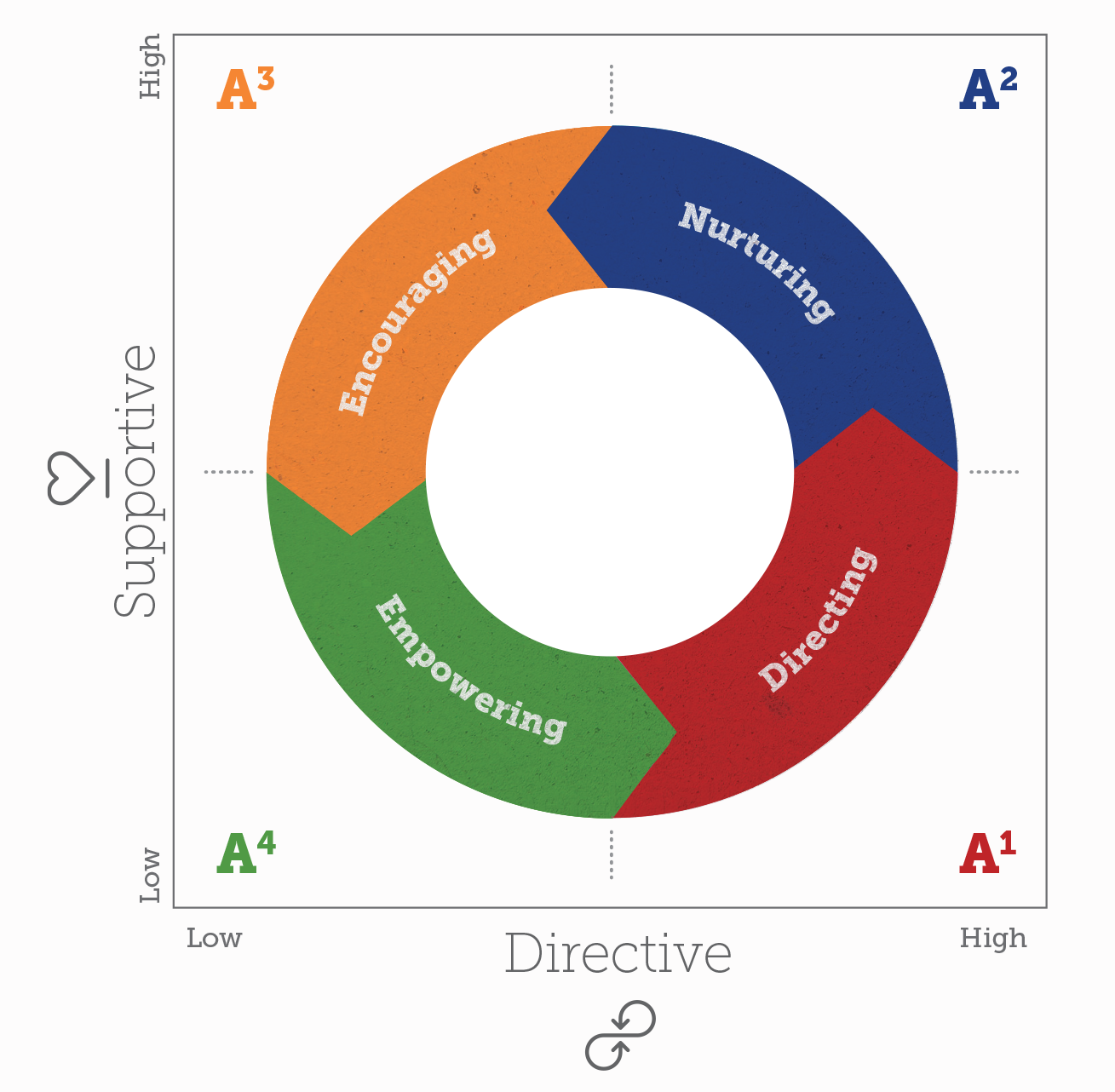Supervision sessions, coaching, advice, support all take up big chunks of your time – time away from your ‘own’ work. So the question is, how can you maximise the positive impact you have on individuals and your team as a whole?
Part of the answer is to understand we all have our preferred approach to – or style of – leadership. Sometimes our preference effortlessly keys into what the team needs, and members seem motivated and responsive.
Other times, however – despite the fact that you’re using the same approach and it’s the same people you’re working with – there’s complete mismatch. All of a sudden you find yourself struggling even to engage with staff, let alone get the outputs you need. What’s gone wrong?
The answer, quite simply, is that you can’t hope to keep people on side day in, day out, unless you adapt your leadership style to changing circumstances and the tasks undertaken. In leadership one size most certainly does not fit all. And that’s where =mc’s Intelligent Leadership model can help.
The model recognises that different people need different levels of support and direction depending on their experience of doing the task. In addition to this, the model recognises that the same person may need a different level of support and direction when a task changes. So when someone is new to a task they need a lot of direction, since they may have no idea how to go about doing it. But as they gain in confidence and competence you expect to give them less direction and perhaps more support… Until there’s another new task for them to do – and then you go back to giving them a lot of direction.
=mc’s Intelligent Leadership model is designed to help you:
And most importantly:
As a leader you need to draw from two kinds of intelligent behaviours:
Directive intelligence is about “the extent to which the leader (or manager) comes up with solutions, spells out the staff member’s role, sets the performance standard needed, clearly outlines how to do it, and closely supervises performance.”
When using directive intelligence, your behaviour involves, among other things:
Supportive intelligence is about “the extent to which the leader (or manager) encourages the follower to develop solutions, provides support and encouragement, works on interaction, and involves staff members in decision making.”
When using supportive intelligence your behaviour involves, among other things:
=mc’s Intelligent Leadership model is about drawing on these two clusters of behaviour in differing amounts depending on the person, their experience, and the situation. If you think about it, you can use relatively high or low amounts of directive behaviour or relatively high or low amounts of supportive behaviour. You can plot the four choices on a matrix:

Notice there’s not an option to use ‘no’ direction or ‘no’ support, just greater or lesser amounts of each. Let’s look at each of them in more detail.
The A1 approach is characterised by one-way communication. You provide specific instructions about what to do, how to do it and what will be acceptable results, and then closely manage the person’s performance. All decisions rest with you.
In the A2 approach there is significantly more consultation, and encouragement for the person being managed to take some initiative. You ask the person for their opinion on how the task should be carried out, but the final decision still rests with you.
When you use A3, you’re actively sharing responsibility to make decisions with the other person. It requires a much lighter touch than either A1 or A2, requires much more coaching, support and feedback.
Using A4 you entrust your staff member to deliver a high quality result. Your role is to stand back and not meddle! But be prepared to provide some support or direction as required. So which leadership approach is best for you – and the people you work with?
Well, that depends! It may sound clichéd, but there really is no right or wrong answer.
We all tend to have preferences for styles that we’ve used most and feel most comfortable with. The key here is to adapt your behaviour – be flexible. And to learn to be comfortable using all the styles, to fit the requirement of the person you’re working with, and the result you need to achieve. Of course this also relies on good diagnosis of the experience of the person and the situation you’re putting them into.
You may be managing a very competent person and using a predominantly A4 Empowering style. That’s fine… but guard against the danger of complacency and be on the lookout for new challenges to keep them on their toes. A new challenge will require a change of style from you – from A4 ‘this person knows what they’re doing, I can leave them to it’ to A1 ‘this person has never done anything like this before, I need to tell them exactly what’s wanted.’
To beg a cliché, it’s all about different strokes for different folks – but also different strokes for the same folks. Don’t get stuck in one way of relating to a particular person.
If you’ve found this article helpful and you would like more information, please call +44 (0)20 7978 1516 and speak to one of our experienced management consultants.
The =mc Intelligent Leadership model is introduced on the Emerging Managers Programme.